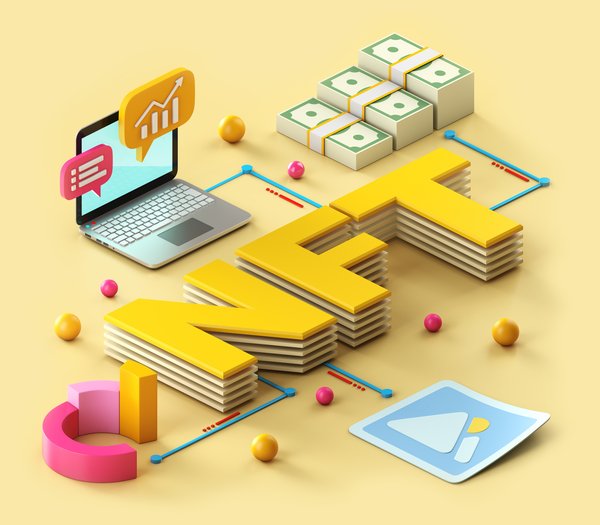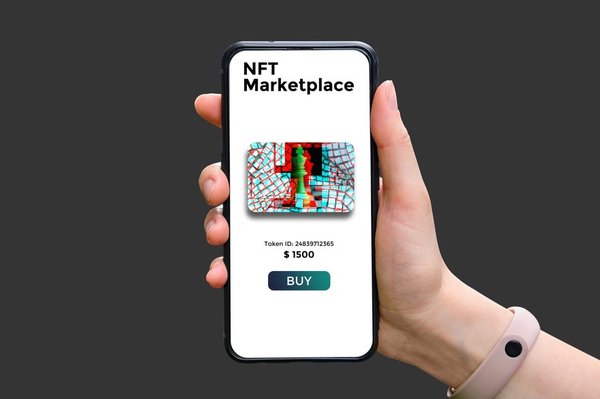So you want to try making some money on NFTs? Welcome to the digital frontier, where trailblazers like you are discovering new uses for cryptocurrencies and pushing the boundaries of technology and digital content creation. For a few speculative investors, getting lucky and buying the right NFTs has paid off handsomely. But there's another way to bankroll this viral movement: Selling NFTs.
If you create digital content of some sort, it makes sense to learn the ropes to see if selling NFTs makes sense. Here's what you need to know.
How to sell non-fungible tokens (NFTs)
To get started selling an NFT, you'll first need to "mint" one of your digital assets as an NFT, or non-fungible token, a type of digital certificate created on a blockchain network -- usually Ethereum (CRYPTO:ETH) -- that guarantees ownership of your work. You can mint any digital creation as an NFT, from art to writing and music to video games. It's easy to transform the file into an NFT, too, by following a few simple steps. Just bear in mind that the ultimate selling price of your work will depend on subjective factors such as its creativity, quality, and your reputation among potential patrons.
Here are the steps involved in making a sale.
1. Select a marketplace and create an NFT
The first step is selecting the right NFT marketplace. Think of these marketplaces as the Amazon (NASDAQ:AMZN) of the NFT world, an online repository of digital work that can be bought or sold. There are dozens of marketplaces, and many of them specialize in a certain type of digital asset. OpenSea currently boasts the largest and most diverse market of NFTs.
Once you've selected the marketplace you want to use, link your funded cryptocurrency wallet, select the "Mint an NFT" option, and upload your digital file. Each marketplace's process will differ slightly, but most allow you to create an NFT with just a few clicks. Also note that if you are interested in passively monetizing your work over time via royalties (a percentage of each subsequent sale of your NFT on the secondary market, payable to you), you will usually set that royalty amount during the minting process.
2. List your NFT for sale
Once you've created your NFT, you will be presented with the option to list it for sale on the marketplace. Note that although you can transfer and sell your NFTs on other marketplaces, it might cost extra fees.
Click on the "Sell" button, and follow the prompts. Here you'll be able to provide some details on the transaction such as the price or auction time limit and the cryptocurrencies NFT buyers can use to pay you. The marketplace will calculate any "gas fees" at this point, which are the Ethereum blockchain network's fees for recording transactions. These gas fees are variable depending on how busy the blockchain network is at the moment. The marketplace itself will also list its fees for handling the sale, usually a percentage of the final NFT sale price.
3. Manage your listing
Once you complete the listing, your NFT is available for purchase on the marketplace. Now you need to promote the sale to potential patrons via your website or social media. You can manage your NFT listing as well, but bear in mind that making changes or removing the listing might incur another fee, and gas fees you've already paid aren't refundable.
How to trade NFTs
Selling NFTs isn't just for digital creators. Some collectors trade from their collection of NFTs. If you have previously purchased an NFT from a creator or from another collector on a marketplace, you can list those for sale as well.
Selling an NFT you bought
Selling your NFTs on the secondary market (a transaction not involving the original NFT creator) is the same process listed above except there's no need to create the digital asset. Just transfer the NFT to the marketplace where you want to sell it (if it currently isn't already there, or if you are storing your NFTs only in your personal crypto wallet and don't have them available to be viewed on a marketplace). Then click on the "Sell" button from within the page of the NFT you want to sell. Gas fees and marketplace listing fees will apply and will reduce your final take-home amount, as will any royalties that the original NFT creator has set.
When to sell an NFT
The right time to sell an NFT will largely depend on the purpose of the NFT itself and why you created it or bought it in the first place.
If you're an artist or digital creator, minting and selling NFTs can be a new way to get paid for the work you do, so selling will largely depend on demand for what you do and what buyers are willing to pay. Keep tabs on interest among your patrons to maximize your selling price, but also bear in mind that gas fees could seriously reduce your profit -- or even cause you to sell at a loss if the purchase price isn't high enough. For example, high Ethereum network gas fees have been a problem for some NFT creators, so don't automatically expect that your sale will mean a profit.
Perhaps you bought an NFT for a specific purpose and don't need it anymore, or an NFT you bought has appreciated in value. Selling might be a good idea if you have other needs for the money or better places to invest. When calculating your possible profit or loss on the sale, remember to include gas fees, marketplace listing fees, and royalties paid to the original creator. As for gas fees, it's possible to lower those with a little timing for your listing, such as avoiding days when the Ethereum blockchain network is congested.
Selling NFTs isn't easy money. Creating and then selling your digital work will incur Ethereum network and marketplace costs, and trading NFTs can be uncertain given the volatility in this young movement. But if you're a creator looking for a new outlet to build your business, this realm of the crypto world is worth exploring as it can open new doors for monetizing your talents.


























